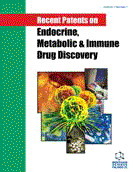Abstract
Targeting adipose tissue via pharmaceutical intervention or lifestyle interventions is a concept of great interest and novelty. The importance of proximity of adipose tissue to the organs is also intriguing. In fact, a body of evidence shows that regional fat distribution, particularly the visceral fat compartment, plays a role in the development of an unfavourable cardio-metabolic profile, rather than overall adiposity. Intuitively, visceral adipose tissue, now clinically measurable by simple, accurate and reliable diagnostic tools, is the most desirable therapeutic target. Changes in regional fat distribution can be used to estimate drugs effectiveness and their mechanism of action. Among visceral adipose tissues, a body of evidence suggests that cardiac adiposity may play an important role in the development of an unfavorable cardiovascular risk profile. Epicardial and intra-cardiac fat are new and promising markers of cardiac and visceral adiposity and increased cardiovascular risk. This article briefly deals with the perspective and potential of epicardial and intracardiac adipose tissues as new diagnostic markers and therapeutic targets in obesity management and treatment along with related patents.
Keywords: Anti- obesity drugs, new therapeutic targets, epicardial adipose tissue, visceral adiposity
 2
2





















